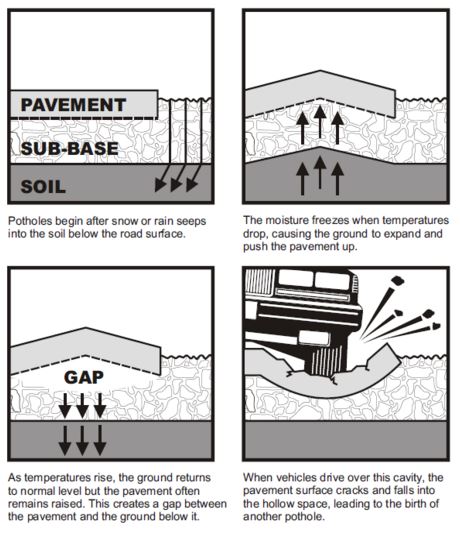Potholes occur when snow and ice melt during Michigan’s seasonal freeze-thaw cycle. The resulting water seeps beneath the pavement through cracks caused by the wear and tear of traffic. As the temperatures cool to freezing overnight, the water becomes ice and expands below the pavement, forcing the pavement to rise. As the weight of traffic continues to pound on this raised section – and the temperatures once again rise above freezing – a shallow divot occurs under the surface and the pavement breaks, forming a pothole.

A pothole is typically fixed by cleaning out the loose debris and filling it with hot or cold asphalt patch.
- Keep your tires properly inflated. An improperly inflated tire is more likely to burst when it hits a pothole.
- Maintain a safe speed.
- Avoid potholes safely.
- Beware of other cars or truck swerving to avoid potholes.
- Be extra careful at night if there is a possibility of potholes.
- Be extra cautious around puddles- they could be potholes filled with water.
- Have your suspension and steering components checked out by a qualified mechanic. Responsive steering will help you avoid potholes. Shocks, struts, and springs help cushion the blow.
